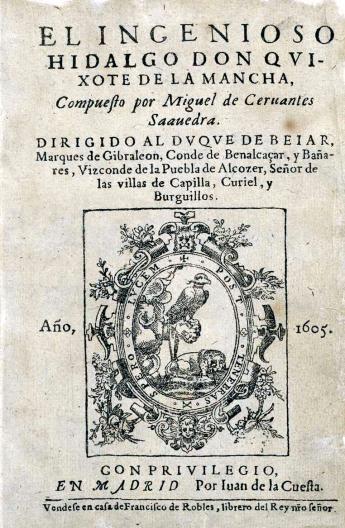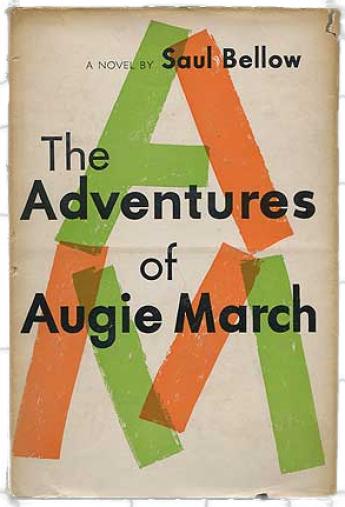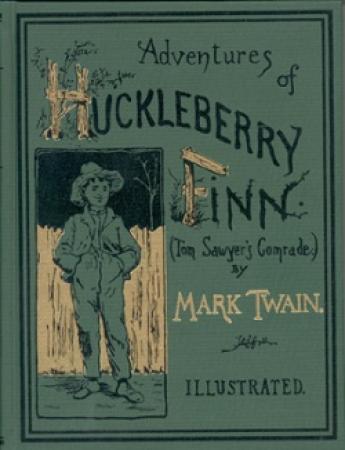Antiquarian Booksellers' Association of America Books Tell You Why, Inc.
Collecting - Picaresque Authors from Cervantes to Bellow

By Kristin Masters
Likely born on September 29, 1547, Miguel de Cervantes worked as both a chamber assistant to a cardinal and as a tax collector before making his "literary break" with Don Quixote de la Mancha. The first part of the novel, published in 1605, established Cervantes as a formidable man of letters. Don Quixote is considered the first modern European novel and a stellar example of the picaresque novel.
"Picaresque" derives from the Spanish word "picaresca," which comes from "picaro" ("rogue" or "rascal"). Usually satirical, a picaresque novel follows the exploits of a hero, usually low born, who must survive by his wits as he travels about on various (usually unlooked-for) adventures. The roots of the genre can be traced all the way back to Rome, with works like Petronius' Satyricon and Apuleius' The Golden Ass. Although influential writers like Chaucer and Boccaccio certainly included elements of the picaresque in their writing, the first modern picaresque novel is Lazarillo de Tormes. It was published anonymously in Spain and Antwerp in 1554.
Cervantes undoubtedly popularized the genre, which blossomed in the next two centuries all over Europe. Sterling examples Voltaire's hilarious Candide and Henry Fielding's The History of Tom Jones, a Foundling. Here's a look at other great authors who have contributed to the genre of the picaresque.
1. Saul Bellow
Though legendary American author Saul Bellow actually disparaged the picaresque in his own letters, one cannot deny that The Adventures of Augie March falls into that genre. The 500-page novel follows the exploits of the eponymous protagonist, a sort of modern-day American Everyman. When Augie March was published in 1953, New York Times critic Orville Prescott called the novel "a picaresque novel in the exact sense of the term - a novel about the adventures of a rogue held together only by the personality of its hero, with no unifying structure or situation." Augie March earned Bellow the 1954 National Book Award for Fiction, while both the Modern Library board and Time magazine named the book one of the hundred best English-language novels.
2. Charles Dickens
Heavily influenced by eighteenth-century picaresque authors Tobias Smollett and Henry Fielding, Charles Dickens wrote his first several novels in the picaresque style. The episodic nature of Dickens' first novel, The Pickwick Papers, certainly evokes the structure of the picaresque. In Oliver Twist, the orphan protagonist strives to make his own way on the mean streets of London. But many scholars and critics agree that Martin Chuzzlewit embodies Dickens' best work in the genre and represents his transition to a more mature writing style.
3. Mark Twain
Mark Twain's The Adventures of Huckleberry Finn is considered to represent the first great American picaresque novel. Published first in the United Kingdom in 1884 and in the US in 1885, Huckleberry Finn is a sequel to The Adventures of Tom Sawyer. As Huckleberry Finn travels along the Mississippi River, he finds himself confronted with the harsh realities of the antebellum South. Twain often incorporates quite biting satire. While Bellow might disagree, plenty of critics have noted similarities between Twain's Huckleberry Finn and Bellow's Augie March.
4. Astrid Lindgren
The picaresque style seems particularly suited to children, and Astrid Lindgren did just that with her children's classic Pippi Longstocking. The apparently parent-less protagonist rides into town on her horse one day and leads her newfound friends Annika and Tommy on all kinds of exciting adventures. Lindgren originally conceived of the character when her daughter, Karin, abruptly said, "Tell me a story about Pippi Longstocking." An international hit, the book has been translated into more than sixty languages - even though it was initially rejected by publishers. Lindgren is the namesake of the Astrid Lindgren Memorial Award (ALMA).
5. Rudyard Kipling
Nobel Prize winner Rudyard Kipling ventured into the picaresque in 1900, when the first installment of Kim appeared in McClure's Magazine. The orphaned Kimball O'Hara, better known as "Kim," lives as a vagabond in nineteenth-century imperial India. The novel is often considered Kipling's masterpiece, and experts debate whether the book qualifies as children's literature because it addresses such adult themes. In his history of children's literature, scholar Roger Sale calls Kim "the apotheosis of the Victorian cult of childhood."
***
Posted on Books Tell You Why, presented here by permission of the author. Pictures: Books Tell You Why, Between the Covers


